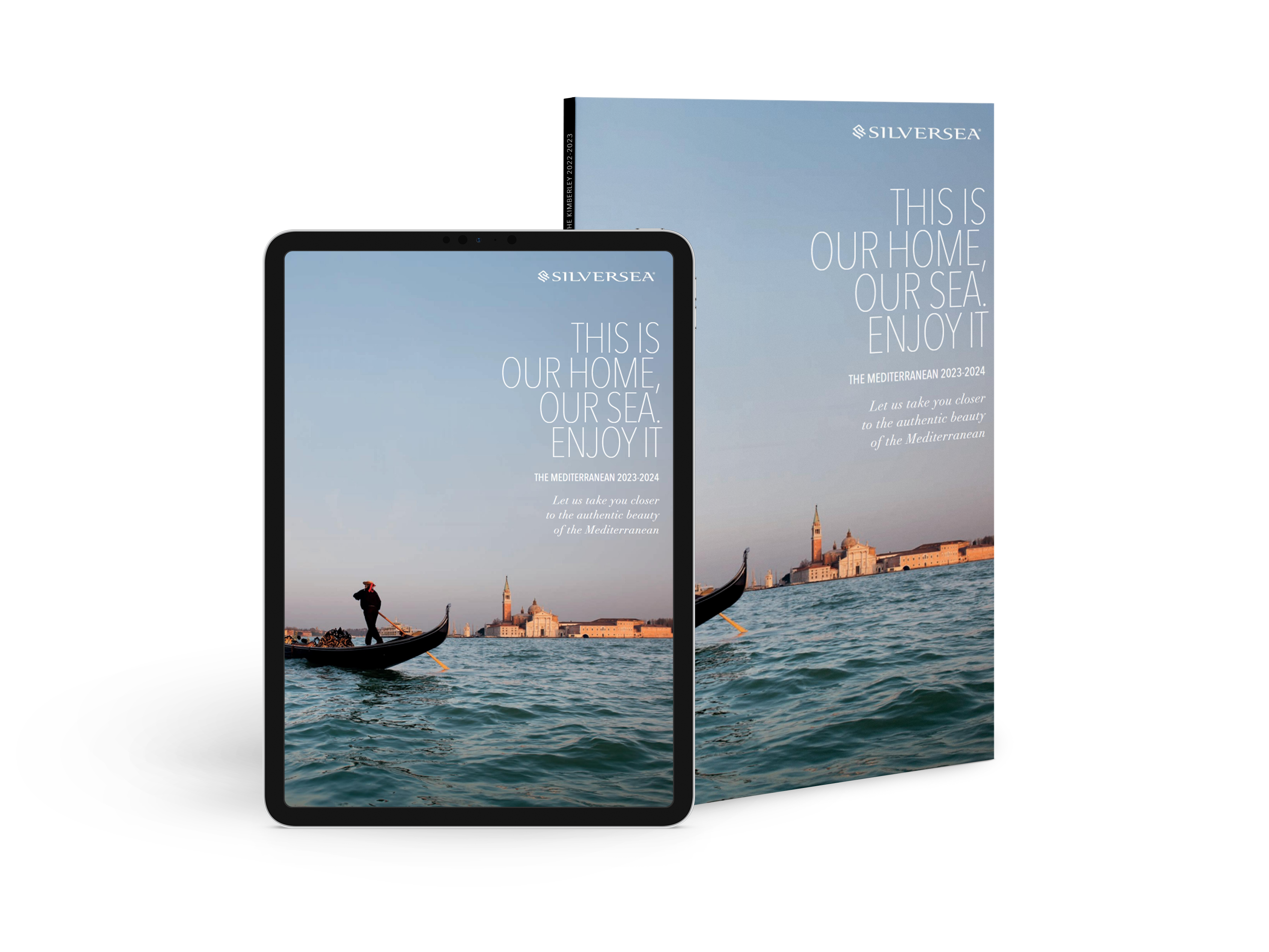Mediterranean
This is our home, our sea. Enjoy it.
Find your cruise
Mediterranean dreams
The fabled lands of the Mediterranean have been the inspiration for artists and poets throughout the ages. Enjoy the exceptional value of an all-inclusive Silversea cruise as you discover this storied region's charming seaside villages and ancient archaeological treasures. Discover the highly personalised style of travel that discerning travellers prefer. The camaraderie of like-minded guests in the open bars and lounges. The spacious suites with butler service and award-winning cuisine. The free Wi-Fi throughout the ship.
Let your Mediterranean dreams take flight with Silversea.
-
-
-
-
-
-
-
-
-
-
-
-
-
-
-
-
-
-
-
-
-
-
-
-
-
-
-
-
-
-
-
-
-
-
-
-
-
-
-
-
-
-
-
-
-
-
-
-
Mediterranean Brochure

Request a complimentary brochure
Travel Deeper
OUR SHIPS GOING TO THE MEDITERRANEAN
Silver Cloud
With 20-brand new Zodiacs, four superlative restaurants in Antarctica and a pole-to-pole expedition itinerary, Silver Cloud really does break the ice between expedition and luxury.
- Crew Onboard212
- Guest Capacity254
- Suites127
- Dining Options4
- Dolce Vita
- Zagara Beauty Salon
- Pool Deck
- Reception
- Fitness Centre
- Connoisseur’s Corner
- Observation lounge
- Boutique
- Explorer Lounge
- Panorama Lounge
- Zagara Beauty Spa
- Photo Studio
Silver Dawn
A new Dawn has arrived! Our tenth ultra-luxury ship joined our fleet in April 2022, sailing a worldwide itinerary that promises authentic, immersive experiences.
- Crew Onboard411
- Guest Capacity596
- Suites298
- Dining Options8
- S.A.L.T. Bar
- S.A.L.T. Lab
- Panorama Lounge
- Casino
- Dolce Vita
- Fitness Centre
- Otium Spa
- Observation Library
- Connoisseur’s Corner
- Arts Café
- Pool Deck & Jacuzzi Area
- Boutique
- Otium Beauty Salon
- Venetian Lounge